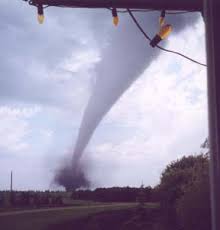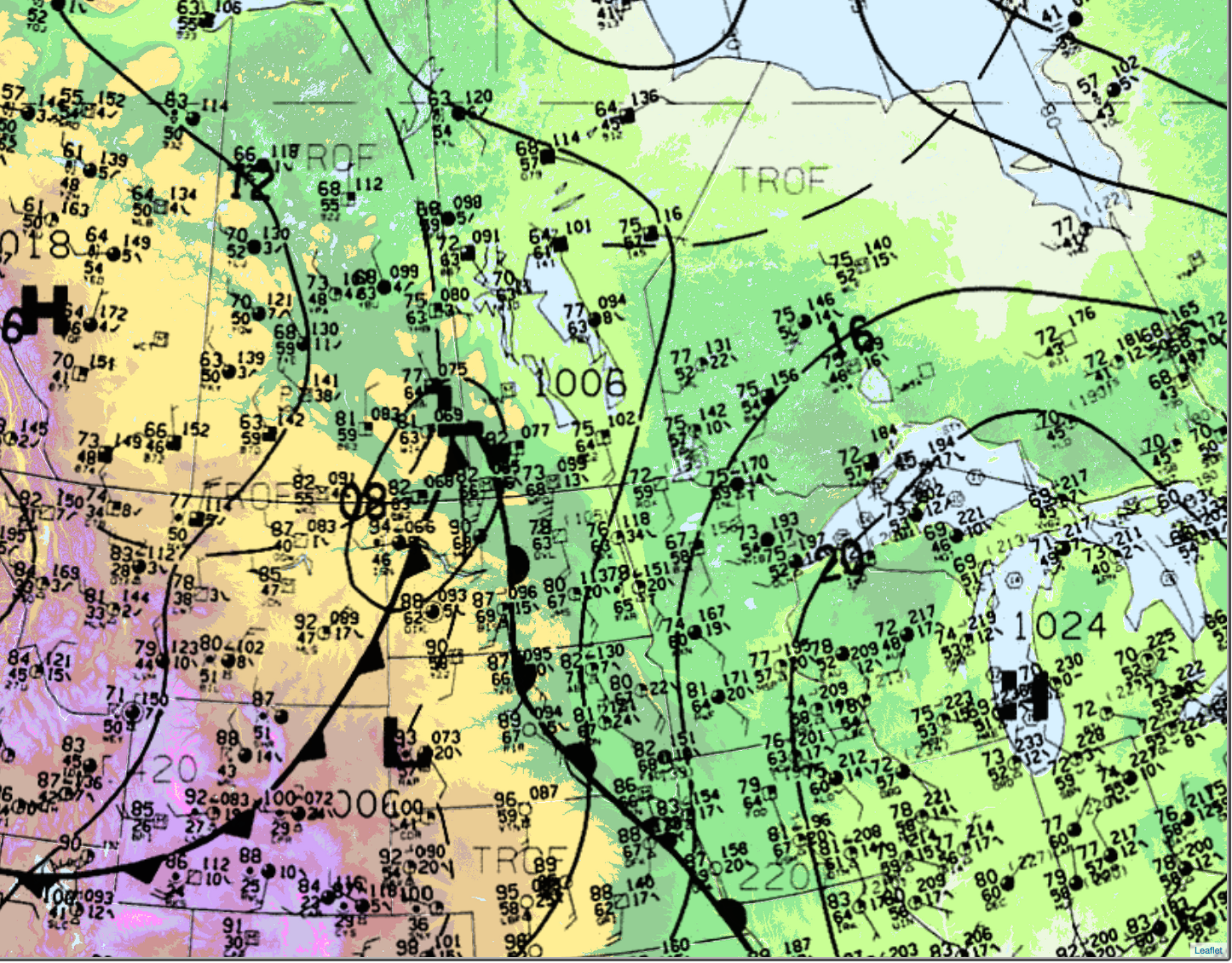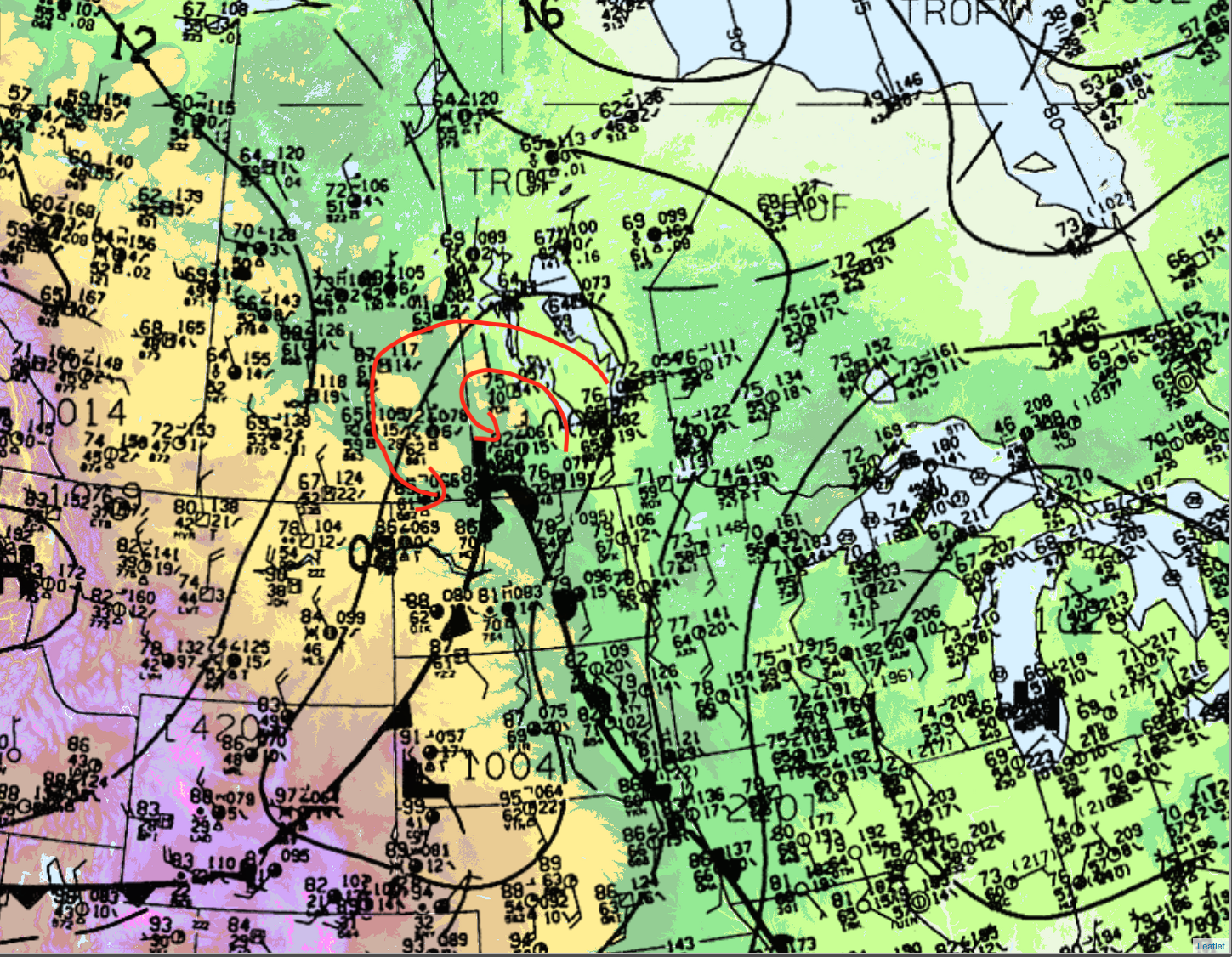The Birtle, Manitoba F4 tornado went mainly unnoticed by most news media and information is sparse on the event. According to the Brandon Sun (1994) and ECCC (2018), a tornado touched down near the town of Birtle (~100km northwest of Brandon) in the evening hours of Sunday July 10, 1994. This storm was accompanied by golf-ball size hail and caused significant damage to several farmsteads.

I was only able to find this one picture of the tornado, which was part of a presentation from the Prairies and Arctic Storm Prediction Centre (PASPC) in Winnipeg. According to Environment and Climate Change Canada (ECCC) (2018), the tornado occurred at 7:05 pm (local time) near the town of Birtle, MB and ended near Shoal Lake, MB. The path of the tornado was 29.2 km, the width is unknown and 2 injuries were reported (ECCC, 2018).
According to ECCC (2018), several other tornadoes were reported on this day, in the vicinity of the Birtle F4, including:
- F0 near Esterhazy, SK
- F1 near Foxwarren, MB
- F1 near Balgonie, SK
- F0 near Hazel Dell, SK
The Forecast
![[GIF]](https://highwaysandhailstones.com/wp-content/uploads/2020/05/200506111829.gif)
Figure 2 depicts the 500mb chart of conditions at 7:00 pm CDT (five minutes before the Birtle tornado). In Figure 2, we can see an upper-level trough ejecting into western Canada, sitting on the British Columbia/Alberta border. This would mean prevailing westerlies for Saskatchewan and Manitoba.

Figure 3 depicts the surface analysis at 4:00 pm CDT. A strong low pressure is seen ejecting north and sitting on the Saskatchewan/Manitoba border, with its associated cold front all the way into Wyoming. A warm front is seen extending from the Southern Plains into southwestern Manitoba.

Figure 4 depicts the surface analysis at 7:00 pm CDT or five minutes prior to the F4 tornado. In Figure 4, we can see the low pressure is now in extreme southwestern Manitoba. I have drawn surface flow, which rotates in a counterclockwise fashion around the low pressure (red arrows). This flow, combined with local terrain interactions, most likely enhanced low-level shear in western Manitoba (Westman). Birtle sits just to the east of the Manitoba Escarpment, which is higher in topology than the surrounding plains. This counterclockwise flow would have pooled against the escarpment in a manner that we refer to as orographic lift. This is common in mountain chains such as the Rocky Mountains, but the Manitoba Escarpment has also been referenced to initiate and/or enhance local convection (Hobson, 2011). These factors likely contributed to the several tornadoes that were reported and the strong Birtle, MB F4 tornado.
Reported damage
The Birtle, MB tornado was a major tornado. Two farms took a direct hit. The first farm, the roof was torn apart, lifted and the furniture was “sucked” out of the house. Everything else on the farm was destroyed. Luckily, nobody was home at the time. The preliminary rating of F2 was then given. As the tornado tracked eastward, a second farm was completely destroyed. Entire house was lifted off its foundation and landed on its roof 250 feet away. A large barn was hit with its content not to be seen within a quarter mile radius. All farm equipment and vehicles were tossed about 300 metres from their original location. All trees were gone. A couple and their children hid in their basement behind a sofa. Mother and baby suffered a few scratches. At this point, the tornado was given the rating of F4. The tornado continued east-northeast lifting/touching down several times according to eye witnesses. The tornado lasted roughly 40 minutes (O. Stachowiak, personal communication, July 24, 2019, ECCC unofficial report).
Sources
Brandon Sun (July 11, 1994). Countdown to 2000, the march to the millennium. Retrieved from: https://newspaperarchive.com/brandon-sun-jul-11-1994-p-2/
APEGM Professional Development Committee (2004). Structural Impact of Wind and Tornadoes. Luncheon Presentation.
Plymouth State University. (2019). Plymouth State Weather Center. Retrieved from: https://vortex.plymouth.edu/myo/upa/ctrmap-a.html
NWS’s Weather Prediction Center. (2017). Surface analysis 21Z Sun Jul 10 1994. Retrieved from: https://www.wpc.ncep.noaa.gov/archives/web_pages/sfc/sfc_archive.php
Environment and Climate Change Canada (2018). Canadian National Tornado Database: Verified Events (1980-2009) – Public. Retrieved from: http://donnees.ec.gc.ca/data/weather/products/canadian-national-tornado-database-verified-events-1980-2009-public/?lang=en
Hobson, J. J. (2011). Meteorological Analysis of the 22 June 2007 F5 Tornado in Elie, Manitoba (unpublished master’s thesis). University of Manitoba, Winnipeg, Manitoba, Canada

